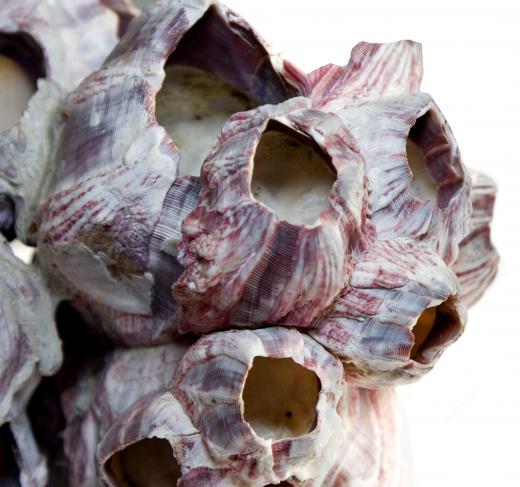What are Crustaceans?
 Michael Anissimov
Michael Anissimov
Crustaceans are arthropods, like insects, but unlike their cousins, have primarily adapted to life in the oceans. The term "crustcean" comes from the Latin word crusta meaning "crust, shell, or hard surface." Like other arthropods, crustaceans have a hard shell, often thicker than its insect cousins, and mandibles used to handle and consume food. Crustaceans are distinguished from other arthropods by being a monophyletic group (descending from a common ancestor) and possessing biramous (branching) limbs.
Crustaceans include many familiar animals — lobsters, shrimp, barnacles, crabs, and crayfish. There are also terrestrial crustaceans, such as terrestrial crabs, woodlice, and terrestrial hermit crabs. There are billions of woodlice in a typical forest, and some Pacific islands are literally swarming with terrestrial crabs. Some, like the coconut crab, are huge, with a leg span of 2 m (6 ft) and a weight up to 4 kg (9 lb). The coconut crab is the largest living land arthropod, capable of crushing coconuts with a single hammering motion of its claws. It even consumes rats occasionally, and will attack a human if threatened, though no deaths have ever been reported.

There are some less familiar crustaceans. One is the giant isopod, Bathynomus giganteus, foot-long relatives of woodlice that slowly cross the ocean floors, eating detritus. Giant isopods, accustomed to the relatively desert-like environment of the deep ocean floors, are capable of going for two entire months without food. These animals were first discovered by French zoologist Alphonse Milne-Edwards in 1879, after he fished up a specimen from the Gulf of Mexico. At the time, the discovery was lauded by both scientists and the public, and it helped prove that the ocean floors were not entirely devoid of life. Yet, to this day, there are many people who have never heard of the giant isopod, and upon viewing images of giant isopods, consider them to be models or the result of photoshopping.
Another class of unfamiliar crustaceans are crustacean lice, which infect every imaginable ocean creature. The hideous whale louse, which is found in the skin lesions, genital folds, nostrils, and eyes of whales, can reach up to an inch in size.
AS FEATURED ON:
AS FEATURED ON:















Discussion Comments
Yea, whale louse can be pretty problematic for whales, but let's not forget barnacles. Barnacles are also crustaceans and they also live on whales. They don't really have the appearance of crustaceans though because they are covered in layers of calcium. They are much larger than louse but usually hang out with them in the same areas.
Louse are definitely more disturbing and what's most shocking about them is how large some are compared to others.
I find coconut crabs fascinating. I'm not an expert on them by any means but I do believe that some of the information about them are a bit exaggerated.
For example, it's true that full-grown coconut crabs may break coconuts with just a few blows. But it usually takes them days to do so and they also take advantage of other methods, like climbing coconut trees and throwing the coconuts down so that they break. And unlike what most people think, these crabs don't just feed on coconuts. They also feed on fruits and nuts and will also eat coconuts when they're available.
Another interesting claim about coconut crabs is that some believe that they may have carried off the remains off Amelia Earhart's remains. This hasn't been proven either and it's probably not true.
This is an excellent article, so informative. I had no idea about the existence of some of these crustaceans. Like most people, I too think of lobsters and crabs when I think of crustaceans. I wasn't aware that there are many varieties and ranging so much in size -- two meters to microscopic creatures! I'm definitely more informed now.
Post your comments